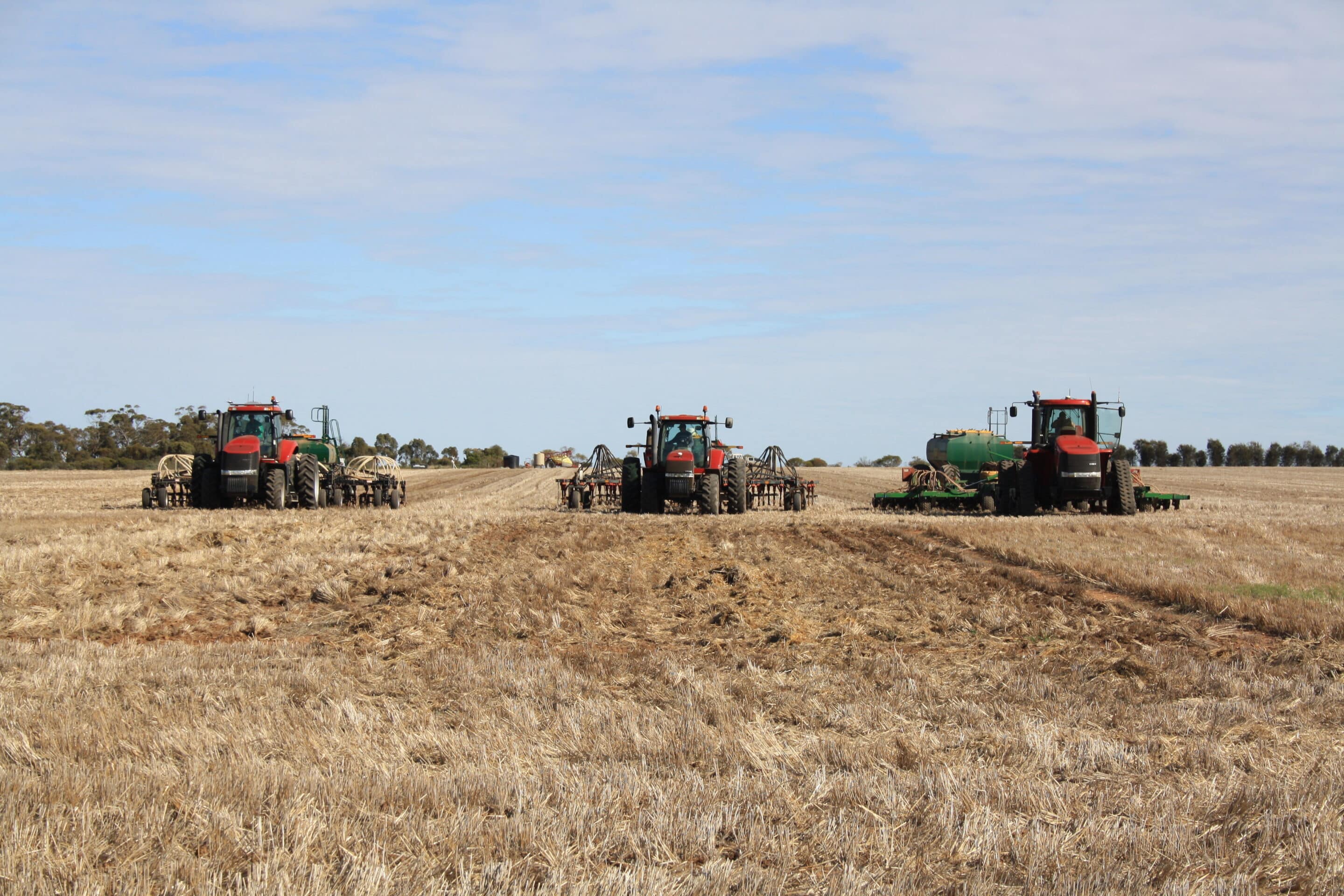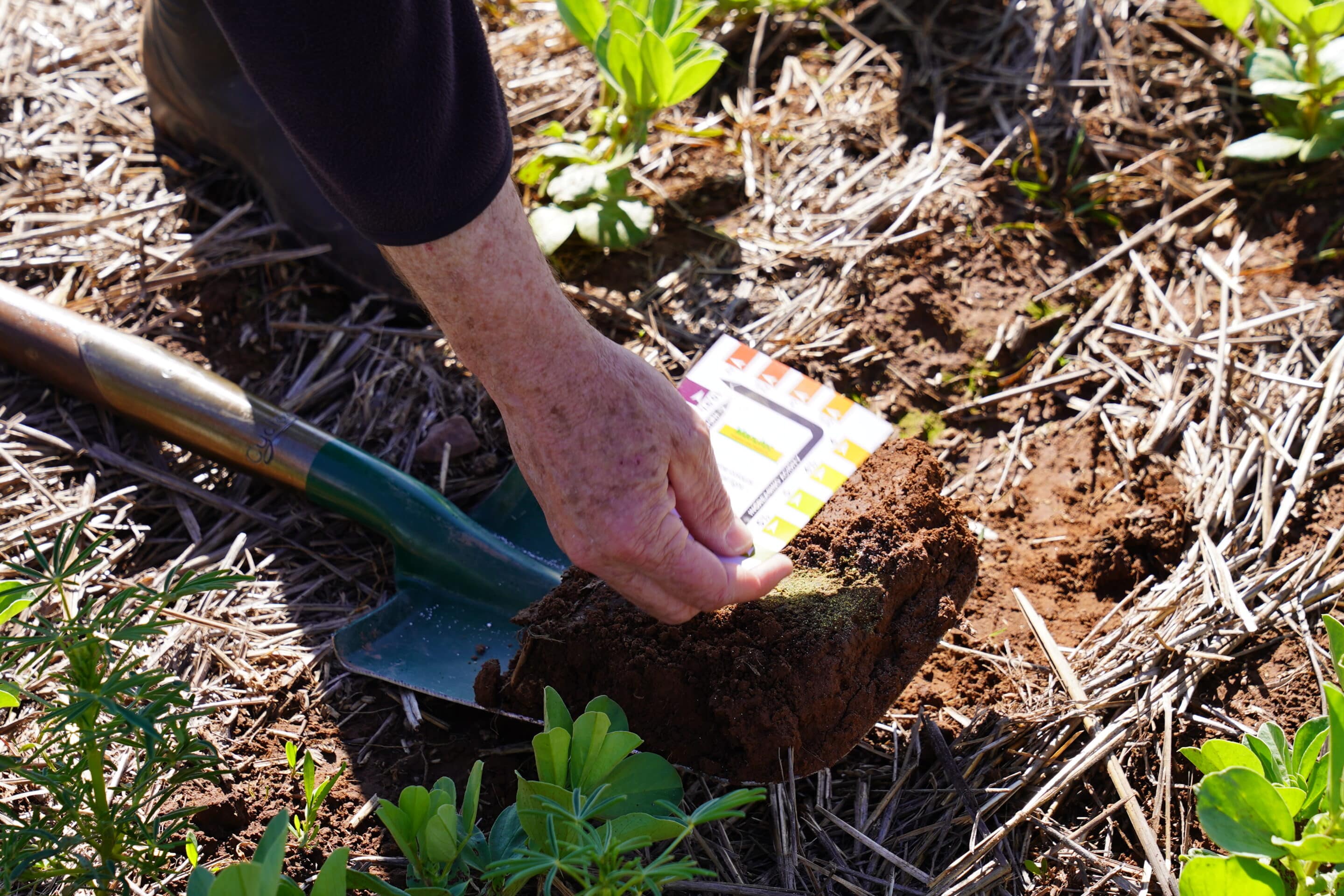START
FINISH

Summary
A farmer’s choice of seeding system has implications for cost, productivity and profitability. Demonstrating the effects of different cropping systems and nitrogen inputs on a commercial scale and over multiple growing seasons would help inform this significant decision.
Since 2000, the Hart Field-Site Group has investigated various cropping systems and fertiliser inputs on nitrogen mineralisation, soil biology and crop yield.
The resulting knowledge has valuable implications for growers across the southern growing region, where a diversity of stubble management and seeding strategies exist.
Background
When the Hart Field-Site Group purchased their own land for research in 2000, they recognised the potential to conduct a long-term study across different cropping systems and nitrogen fertiliser inputs after favourable seasons provided growers with opportunity to upgrade seeding equipment and adopt direct drill seeding systems (a one-pass system).
Over the ensuing 20 years, Hart has been able to study the effects of three different cropping systems including; strategic, disc and no till seeding systems at a commercial scale.
Research Aims
The core objectives of the project were to:
- Demonstrate the long-term effects of different cropping systems and nitrogen fertiliser inputs.
- Measure nitrogen mineralisation and soil microbiology activity and diversity under these cropping systems N inputs
In The Field
This research compared nitrogen mineralisation and soil microbial levels under strategic, no till and disc seeding, comparing a medium nutrition and high nutrition fertiliser strategy for each seeder type.
The study included soil analysis and soil microbiology surveys for the 2016, 2017 and 2018 growing seasons. The crop rotation across these three seasons was wheat, wheat, field pea.
The 2016 season delivered above average rainfall (365mm GSR) with a cool finish, resulting in strong yields. The higher moisture levels enabled nitrogen mineralisation close to 50 kilograms of nitrogen per hectare (kg N/ha).
The 2017 season was much dryer at 191mm of GSR and the soil experienced long dry periods. As a result, net N mineralisation was far lower (less than 20kg N/ha) than the nitrogen supply potential under optimal moisture and temperature conditions.
Results
Over 20 consecutive cropping seasons, no single seeding system has delivered significantly higher yields than another.
Soil available nitrogen was measured in the autumn of 2016, 2017 and 2019. In 2016 and 2017 the high nutrition treatment had accumulated an average of 70kg N/ha more than the medium nutrition treatment. This difference was not repeated in 2018 where the difference reduced to just 19kg N/ha, due to high wheat protein levels from the 2017 high nutrition treatment extracting more nitrogen from soil reserves. Low summer rainfall in 2017 would also have reduced nitrogen mineralisation and availability for the 2018 season.
Soil analysis of the 2016 and 2017 seeding system trials showed that seeding systems and nitrogen regimes did lead to distinct differences in the microbial communities.
Strategic tillage created the greatest disturbance and had the lowest fungal populations, while disc seeders had the lowest soil disturbance and a comparatively larger fungal community.
Gene sequencing data in 2019 identified 2,044 operational taxonomic units (OUT) of fungi in the Hart soil samples. Approximately 50 per cent (1,082) of these were common to all three seeder types but 7-9 per cent were only present within a single seeding system. This is considered a significant difference.
Table 1. Grain yield (t/ha) for all seeder and nutrition treatments for 2016, 2017 and 2018 seasons.
| Seeder type | Fertiliser strategy | 2016 | 2017 | 2018 |
| Wheat | Wheat | Field pea | ||
| Grain yield (t/ha) | ||||
| Strategic | Medium | 4.8 | 4.8 | 0.8 |
| High | 5.9 | 5.9 | 0.7 | |
| No Till | Medium | 4.2 | 4.2 | 0.9 |
| High | 5.8 | 5.8 | 1 | |
| Disc | Medium | 5 | 5 | 0.7 |
| High | 5.9 | 5.9 | 0.7 | |
| LSD nutrition (P≤0.05) | ns | |||
| LSD seeder (P≤0.05) | 0.2 | |||
| LSD seeder x nutrition (P≤0.05) | 0.3 | 0.3 | ns | |
Project Participants
Hart Field-Site Group: Sarah Noack, Michael Jaeschke, Matt Dare, Justin Wundke, Tom & Ashley Robinson, Peter McEwin
CSIRO Agriculture: Dr Gupta Vadakattu, Stasia Kroker, Marcus Hicks
The Problem
Due to a range of constraints, there has been limited study on the long term effects of different seeding technologies and nitrogen strategies on cost, productivity and profitability.
The research
The Hart Field-Site Group has been able to measure the results of different cropping systems and nitrogen fertiliser inputs on nitrogen mineralisation, soil biology and crop yield across 20 growing seasons.
More information
Rebekah Allen, Hart Field-Site Group
T: 0428 782 470
E: [email protected]
Value for Growers
This project has demonstrated that different cropping systems have a more profound effect on levels of soil fungi than nitrogen mineralisation or crop growth and yield.
This indicates strategic tillage, no till and disc seeder systems all have similar potential for in-season nitrogen mineralisation and, therefore, yield realisation. These results mean growers can select a cropping system based on their moisture, pest and stubble management requirements without a notable or inevitable yield penalty.




